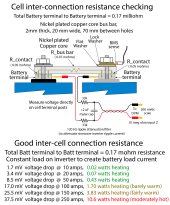phaberest
New Member
- Joined
- Dec 4, 2020
- Messages
- 15
Thank you Arthur, I watched both videos and definitely learnt something! I will take care about checking everything and make sure to replace anything that doesn't look adequateDude, check the resistance. Watch this video. He starts checking the resistance at about 4:00
I made the internal copper bars myself with 5mm x 2cm bars and I might need to check they are good enough, in the second video Ray shows the bars might be slightly bent and this is something I missed checking. They might certainly be since I drilled them locking them to the bench





